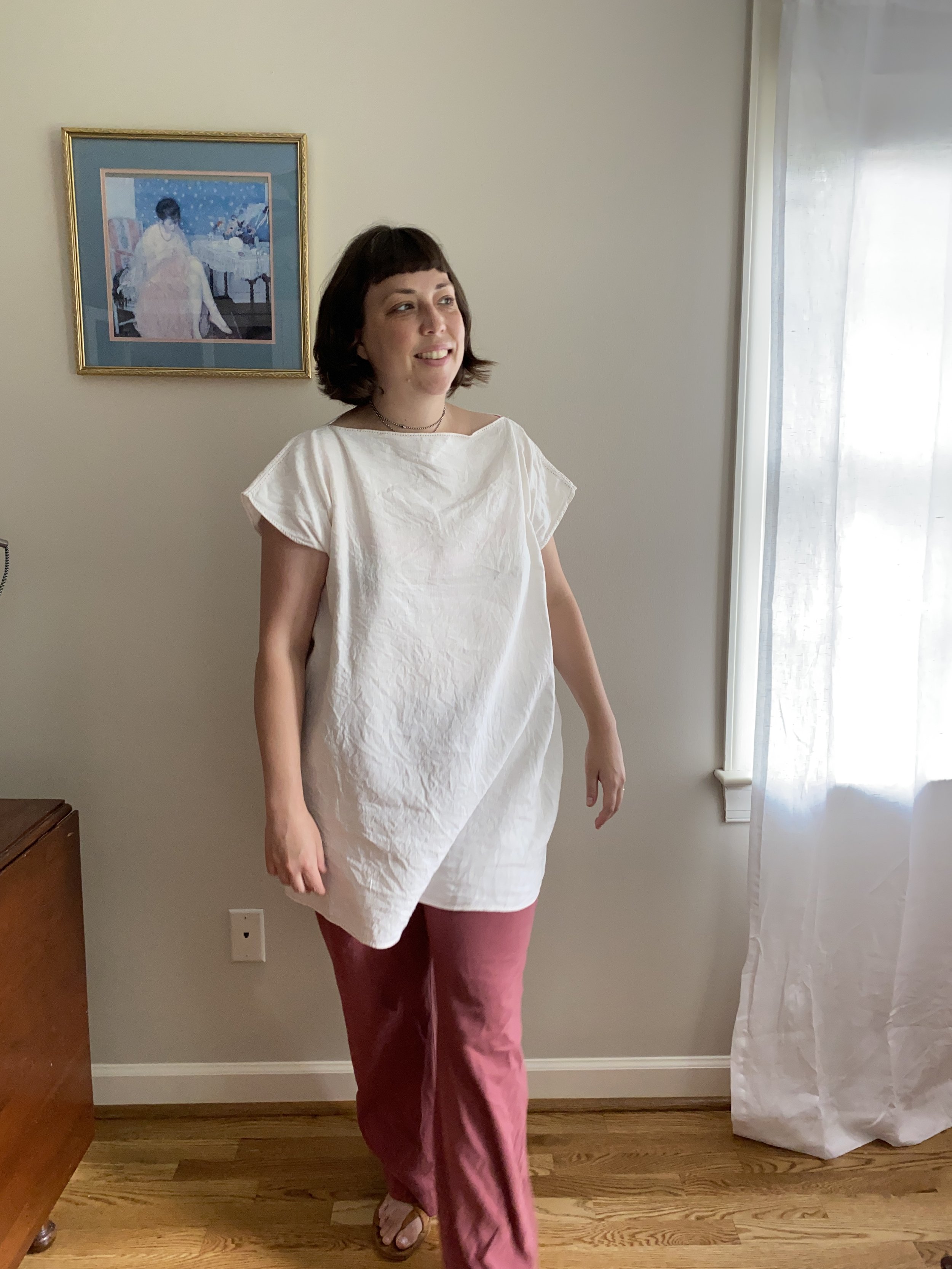Welcome to the Pre-recorded “Hand-Sewn Tunic” Class!
In this pre-recorded class you will make a basic hand-sewn tunic. This simple design is perfect for hand sewing and embracing minimal textile waste. Your tunic will be either a rectangle or a square depending on the design you choose. The goal is to make a tunic you love while also minimizing waste when cutting out the fabric. This class is not intended for you to make only one style. Some of these styles are one piece with a fold at the shoulder and others are two piece and seamed at the shoulder. The goal of the class is to teach you basic designs to empower you to get creative and sew a variety of designs using the theories taught in this class. You will get comfortable with understanding the width and length of your fabric to create a beautiful top. I will be making a blue cotton tunic to teach you these principles. I have also provided two other examples I have sewn as other options to inspire you. One is shorter and one is longer. Once I made one, I couldn’t stop! They are so easy and fun to make!
Workshop format: This workshop is organized in a series of sections with a pre-recorded, close-captioned video as the key manner of instruction. You are strongly encouraged to watch the video before you start sewing. This class is designed for you to go at your own pace using the pre-recorded videos for instruction. Pause, rewatch and review. The goal of this class is to empower you with an understanding of basic garment cutting and construction to create a simple long or short tunic.
To learn more about your teacher, Sarah Woodyard click here.














